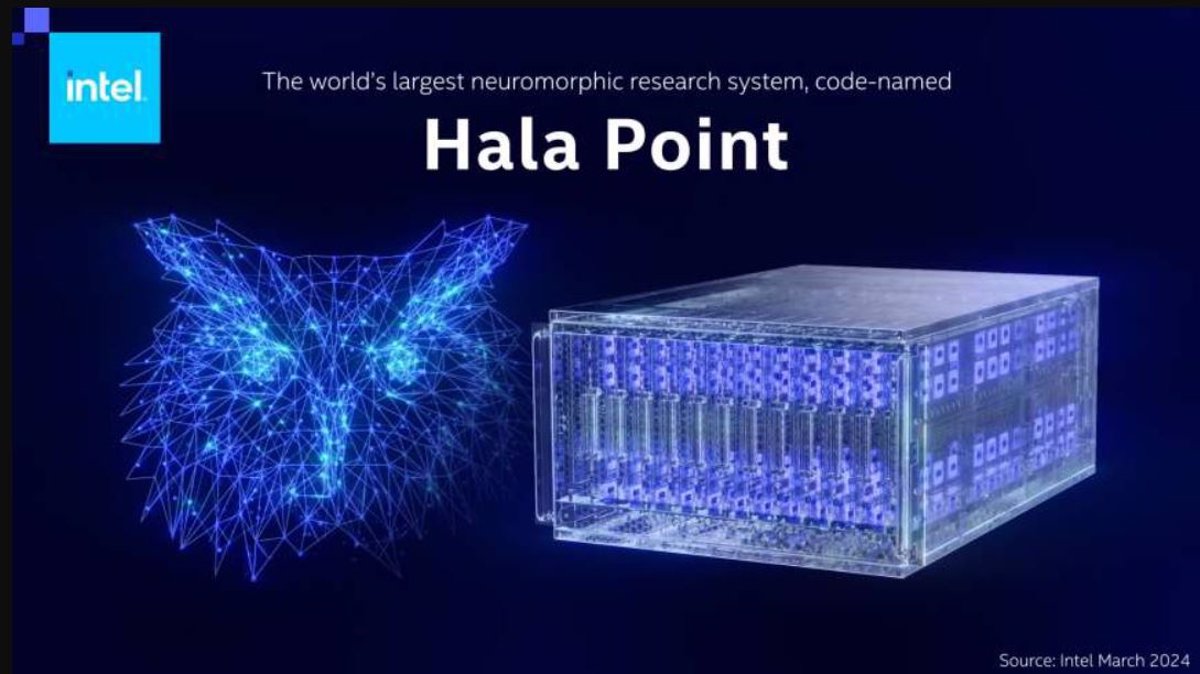Intel has announced that it has built a neuromorphic system of 1,150 million neurons, which uses the firm’s Loihi 2 processors and with which it seeks to build a path towards a more efficient and modular Artificial Intelligence (AI).
Known by the code name Hala Point, this research prototype is initially deployed at Sandia National Laboratories and aims to support the analysis of future brain-inspired AI.
The company believes that “the industry needs fundamentally new approaches capable of scaling,” something in which he hopes that Hala Point will allow “advance the efficiency and adaptability of technology at scale,” according to the director of the Neuromorphic Computing Lab at Intel Labs, Mike Davies.
For this, it has developed Hala Point, a neuromorphic system of 1,150 million neurons, which can support 20 quadrillion operations per second, or 20 petatops with an efficiency greater than 15 trillion operations of 8 bits per second and watt (TOPS/W). when running networks deep and conventional neural.
This is a solution consisting of 1.152 Procesadores Long 2 produced on an Intel 4 process node. Additionally, it supports up to 1.15 billion neurons and 128 billion synapses distributed across 140,544 neuromorphic processing cores, consuming a maximum of 2,600 watts of power. Finally, it includes more than 2,300 integrated x86 processors for auxiliary calculations.
Likewise, this prototype integrates processing, memory and communication channels in a parallelized fabric that provides a total of 16 petabytes per second (PB/s) of memory bandwidth, 3.5 PB/s of inter-core communication bandwidth, and 5 terabytes per second (TB/s) of inter-chip communication bandwidth.
Intel believes Hala Point’s capabilities could enable future advancements in real-time continuous learning for AI applications such as problem solving. scientific and engineering problems, logisticssmart city infrastructure management, large language models (LLM) and AI agents.
Compared to its predecessor, Pohoiki Springs, Hala Point has “numerous neuromorphic performance and efficiency improvements” of the main conventional machine learning models. More specifically, those that process workloads in real time such as video, voice and wireless communications.
Thus, applied to bioinspired models of spiking neural networks, the system can execute its full capacity of 1.15 billion neurons 20 times faster than a human brain and Up to 200 times faster at lower capacity.
With this system, Sandia National Laboratories researchers will focus on solving scientific computing problems in device physics, computer architecture, computer science, and computer science.
Intel has also commented that the delivery of Hala Point to Sandia National Labs marks the first deployment of a new family of research systems large-scale neuromorphics that the firm plans to share with its research collaborators.
